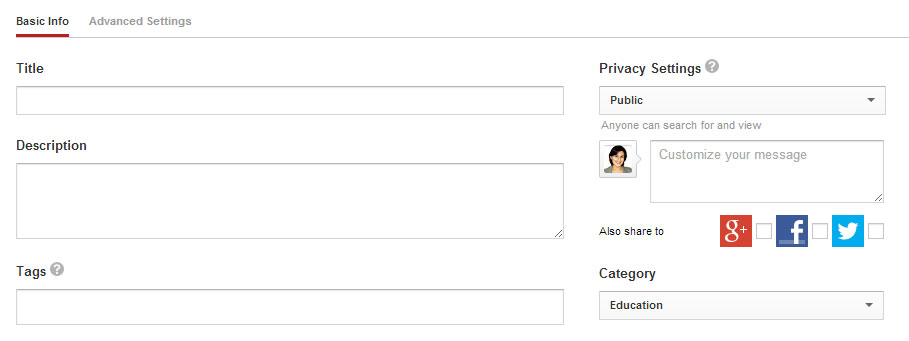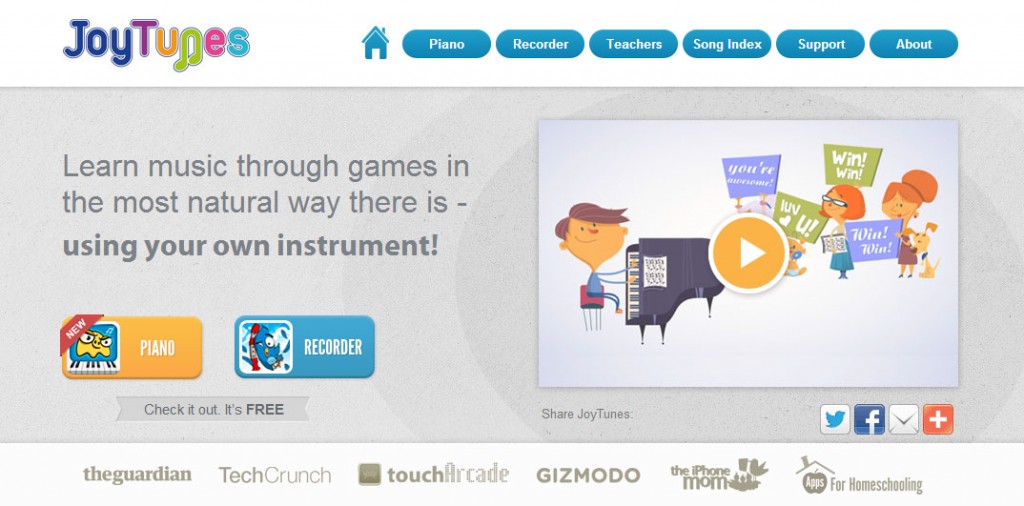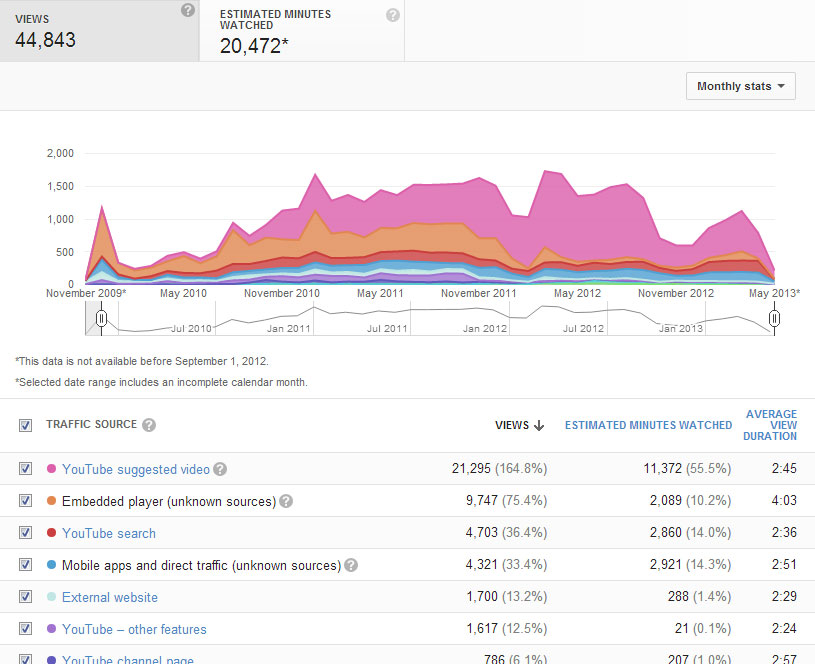Newsflash! Creating a video is NOT video marketing. It’s easy to see why people confuse these two terms though; most of the online chatter is about the production of online videos, and few focus on promotion and distribution, which is what online video marketing is really all about.
If you’re a smart duck (and I’m guessing you are since you’re reading this), you know that promotion is vastly different from production. And as such requires a whole different set of tools, tactics and strategies.
But before you start promoting your video, ask yourself: what is the goal of your video? Hint: your promotional tactics will depend on your goals.
Your goal could be to:
- Increase brand awareness and retention
- Increase product or service awareness
- Achieve brand influencer status
- Increase conversion rates
- Get higher search rankings
- Increase sales & ROI
- Go viral (although not a goal unto itself, many companies deliberately make emotive videos in the hopes they will go viral)
- Some combination of the above
Depending on the goal(s) of your video, here’s a list of five key factors you need to consider to market your online video effectively:
- Where to host your video
- How to optimize your video for search
- Where to place your video on your website
- How to promote your video
- How to measure and track results of your video’s performance and gain insights from the data to improve your video production and/or online video marketing strategy
Step 1: Video Hosting
A video host is a service that will house your video online. For hosting your online video, you have 4 basic options:
- Self-host on a shared hosting plan (e.g. HostGator, BlueHost, etc)
- Self-host on a dedicated server (e.g InMotion, 100TB, etc)
- Paid, secure third-party hosting service (e.g. Amazon S3, Wistia, etc)
- Host on an online video network (e.g. YouTube, Vimeo, etc)
Unless you have a dedicated server with a large bandwidth capacity or a reputable Virtual Private Network (VPN), self-hosting on a shared plan (option 1 from above) is usually not recommended. The rationale is that shared hosting companies may not be able to handle a sudden increase in load and your video could also possibly choke bandwidth (too many people wanting to watch the same video) resulting in your host company suspending your account.
Hosting your video just on YouTube/Vimeo means that you are driving traffic to the YouTube/Vimeo page and not to your own website, which is cool if you want maximum views and viral growth. However, it’s not so cool when people don’t come to your site to buy from you.
To choose which kind of hosting would be best for your online video, the generally-accepted rule of thumb is:
If you want better search rankings (for your own domain), conversions, and links, host your video using a secure third party hosting solution (options 2 or 3 from above).
If you want better overall search rankings (see The Video SEO War is Over at ReelSEO) and maximum brand awareness, host your video on YouTube, Vimeo, Daily Motion or similar sites (option 4 from above).
If you want all of the above, you could host your video on both! In fact, many brands choose to upload videos on YouTube and Vimeo several weeks after they have initially been launched on their own website. This is a good strategy if you want to first drive visitors to your website and attempt to rank in search results, and then focus on gaining maximum views.
Here is a short list of potential hosting providers for your online video:
- YouTube
- Vimeo (note – free accounts are not intended for commercial use)
- Amazon S3
- Wistia
- Vimeo Pro
- Vidyard
- Vzaar
- Brightcove
Of the above, Wistia is highly recommended for B2B companies because of their SEO focus and excellent suite of analytics, while YouTube is a safe choice for maximum visibility and reach. If you are self-hosting, install the Yoast SEO plugin for WordPress for some great analytics and optimization options.
For more information on video hosting, check out this detailed guide by SEOmoz.
Step 2: SEO for Video
Since search engines cannot “read” your video, it’s extremely important to optimize the text associated with your video wherever possible so that people can find your video using search queries. Here’s a handy list of text areas that search engines CAN read and how they will deduce the context of your video.

The title: Your video’s title should contain your keywords in a headline form rather than individual keyword phrases (e.g. “How to Diet and Lose Weight with DietPlan” versus “dieting, weight, weight loss, fat, lose weight, eat healthy, exercise”)
The raw file name: Instead of naming the raw video file the default setting of something alphanumeric like nmv00076.mov, change the name to something short and descriptive – smart-diet-plan.mov. This affects how your video shows up in related searches – at least on YouTube.
Meta description: Write a description between 150-160 characters describing what your video contains. The more detailed your description is using your chosen keywords, the better the chances of your video showing up in the appropriate context.
Tags: This is the place for your individual keywords. Plug in at least 3-4 (e.g. dieting, weight loss, exercise).
Transcription: It’s a good idea to provide a transcription of your video since a lot of people (and search engines) will want to skim your content to gauge its relevance. A transcript is great for SEO, and it also works well for viewers watching in an office without audio. Here is a quick transcription video from the crew over at Wistia.
Video URL: Whenever possible, optimize your video’s URL to contain the word “video” (as well as your targeted keywords) in it. Again this is for the benefit of search engines to find video content easily on your site. So ideally your URL should be www.yourwebsite.com/video/dietplan.html versus www.yourwebsite.com/dietplan.html
Sitemap: You should submit a sitemap for your video to Google so your video is indexed by the search engine. This process can get relatively involved, but some third-party video hosts, including Wistia, allow you to do this with a few clicks.
Thumbnail: Thumbnails have a significant impact on whether a video will get watched or not so choose yours carefully!
Rich Snippet: A rich snippet is a thumbnail preview plus description of a video on the search results page. Videos with rich snippet typically have better conversion rates. To increase your chances of getting a rich snippet, include one or more of the following terms when describing your video: how to, video, explanation, demo, test, tutorial, and other similar words.

Step 3: Video Placement
Obviously you’re going to want to place your video on your website (perhaps in addition to YouTube or Vimeo) but the question is how and where on your website will it have the biggest impact?

Here are some tips:
- Place your video above the fold. If you want people to see it as soon as they get to your home page or landing page, then you don’t want them to have to scroll.
- Decide whether you want the video to play on the page or open up in a lightbox. The advantage of a lightbox is that the player is usually larger and the rest of the text on screen is blurred or grayed out so the viewer’s attention stays on the video. However, if you use a lightbox, you may have some issues with mobile users as well as the inability to create a proper video sitemap.
- Make sure the Play button is nice and big, enticing users to click on it.
- Don’t set your landing page video to autoplay – it is widely considered a bad, if not downright annoying practice, to have a video play without permission.
- Do give viewers lots of sharing options for your video so they can conveniently share and distribute your video. Ensure all social sharing buttons are working and showing your video title, description, etc.
- Make sure there’s plenty of other text on the page that relates to the video content, as well as clear direction for what you want the viewer to do next. For example, do you want them to fill out a Quote Request form? Put the form directly under the video, or at least have a clearly marked link or button to the form nearby.
Step 4: Video Promotion
Whatever your end goal – be it conversions, brand awareness or SEO – it’s always a good idea to get more people to watch your video. And by more I don’t mean “any”. I mean more of your target market. So to get your video in front of the eyeballs of your relevant and targeted audience, you’ll need to promote it right.

Some tips for online video promotion are:
- Share your video on the platforms that make the most sense for the kind of content you are promoting. Look for industry specific websites to promote your video on. So if your video is about a new way to plan your diet, look for portals on dieting, fitness, healthy eating and similar to promote it on.
- Embed your video in blog posts, case studies, company newsletters, SlideShare presentations and more – just get creative!
- Encourage visitors on your website to click on your video by offering them an incentive, such as “Watch this quick 1-minute video to see how it works”
- Encourage viewers to share your video after they have watched it. A simple “Liked this? Why not tell your friends and family about it” would do.
Step 5: Video Analytics
Every good video hosting solution comes with tracking and analytics tools. You’ll need to carefully study these analytics on a regular basis to understand how your video is performing and how you might be able to improve it (e.g. if people are dropping off after 10-seconds, you may need to reconsider your intro). It’s also something your boss is going to want to see. If you can prove online video is having a positive effect on the business (and show specific numbers), not only will you get a nice pat on the back, you’ll have solid evidence when it comes time to budget for video next year.

Here are some factors you’ll want to observe and study and the insights you can glean from the data:



If you’d like to tweak your homepage video and find out what factors would increase your video’s performance metrics (such as conversion rate), you should consider A/B testing your video.
Conclusion
Online video marketing is the next logical step after video production. So if you’ve already made a killer online video, you can put these strategies into effect for the next phase. If you’ve yet to create your video, it’s great to know ahead of time what your promotional options are so you can tailor your video accordingly.
If you have any online video marketing tips or insights to share from your own experiences, please let us know in the comments!